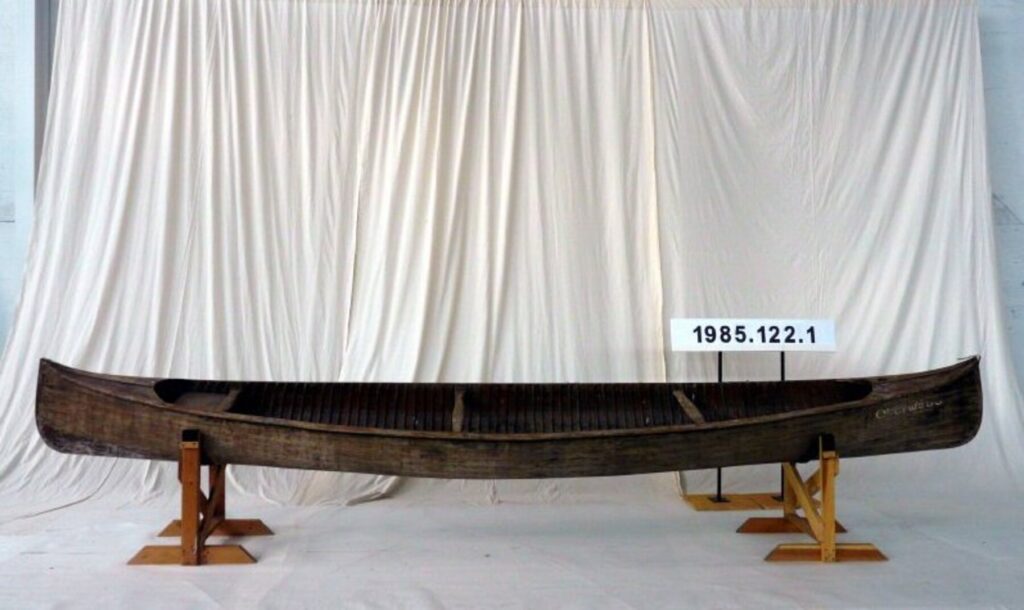By Liz Watkins, Collections Assistant
Have you ever given a favourite object a name?
Think of items from significant moments in your life – perhaps a favourite toy or your first car comes to mind. Putting a name on something changes the value of the item to the owner and gives the object a personality!
Here at The Canadian Canoe Museum, we see a lot of canoes with names. While we may not know the meaning behind every “named” canoe, we have compiled a list of some examples in our collection. The canoes on the Honourable Mention list may not have known stories, but they intrigue us nonetheless. We’re pleased to share them with you in a playful way.
Cheechoo (2010.10.1)
Measuring more than 24 feet-long and 6 feet-wide, this freighter canoe was named after Cree goose hunting guide George Cheechoo of Moose Factory, who guided donor Claude Winters and Douglas Caley on a snow goose hunt in the early1960s in the Moosonee area. This canoe was originally made at the Rupert House canoe factory in the 1950s by Cree canoe builders in Waskaganish, Quebec, on the southeast coast of James Bay.
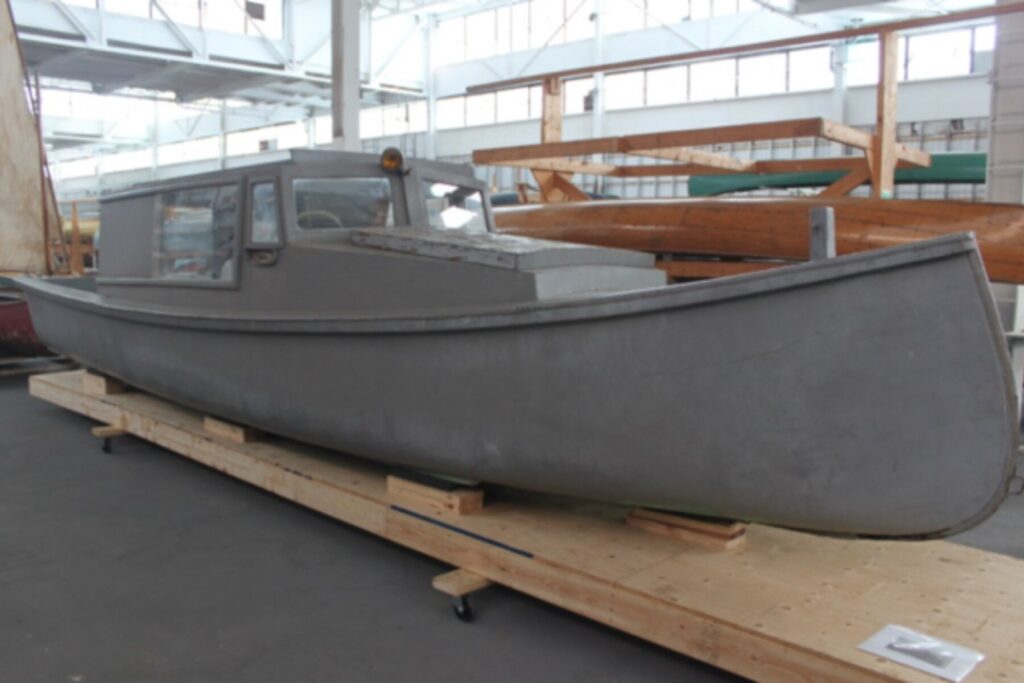
MAH-LIE-ZU-ZEP (1977.41.1)
This canoe was built by an unknown builder in the Passamaquoddy style in the Passamaquoddy River region in Maine, U.S.A., circa 1890s. The canoe is thought to be an original Wabinaki model. The canoe had some restoration work done by Lewis P. Sock, an Old Town Canoe builder. The name MAH-LIE-ZU-ZEP, which translates to Mary Josephine, can be seen on the bow.
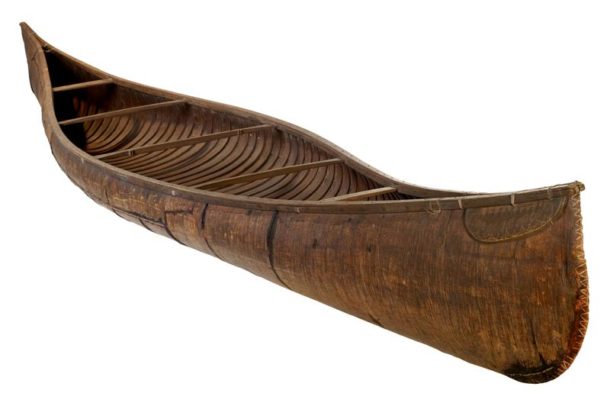
Humpty Dumpty (1982.162.1)
The Humpty Dumpty racing canoe was ordered from the Lakefield Canoe Company in 1923. The order specified a canoe of the “Strickland” #20 model with torpedo decks with a towing ring at the bow. The canoe was propelled with two paddles. We may not know the story behind why the canoe was named Humpty Dumpty, but the meaning is implied!
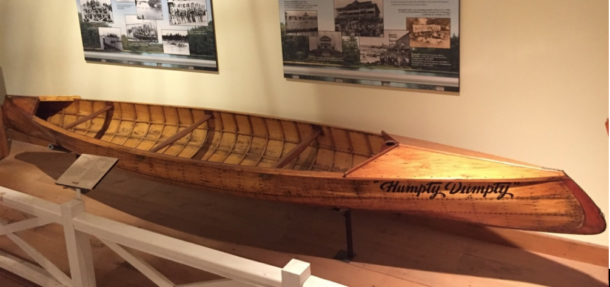
Orellana (2002.5.1)
This canoe was named after Spanish explorer and conquistador Francisco de Orellana, who navigated the Amazon River in 1541. Inspired by this journey, Don Starkell paddled Orellana along with his sons, Dana and Jeff Starkell, to the mouth of the Amazon River. The trip began in Winnipeg on June 1, 1980 and proceeded to follow a route that took the paddlers down the following bodies of water: Red River, Minnesota River, Mississippi River, Intra-Costal waterway near the Gulf of Mexico, the Yucatan Pennisula and the edges of the Caribbean, the water surrounding Trinidad along the coast of Venezuela, up the Orinoco River to the Rio Negro and then down to the Amazon.
The total length of the trip was 12,000 miles unassisted by any motor and was recognized as the longest documented trip made by canoe in 1986. Don Starkell later wrote and published the book Paddle to the Amazon based on the diary he kept of the trip.
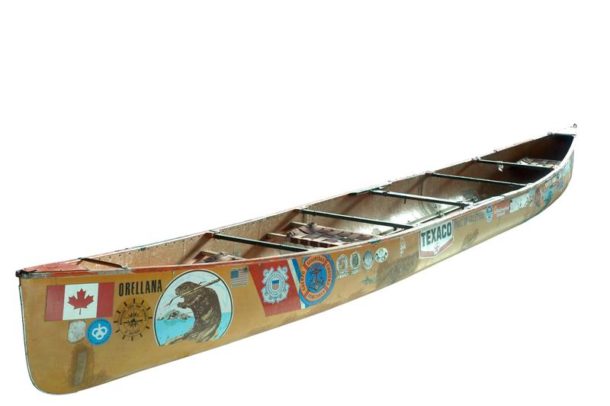
Wee Stoater II (2003.4.1)
In the early 1970s, a Canadian engineering company, Canron, built a bridge over the Nyong River in Akonalinga, Cameroon, Africa, contracted by the Canadian Development Agency. This dugout was constructed out of local ironwood for transportation on the river and for use in preparing the riverbank during the construction. After it was brought back to Canada it was used for growing flowers in the Canron parking lot. It was rescued by an employee, Eric Amos, who donated it to The Canadian Canoe Museum in 2002.
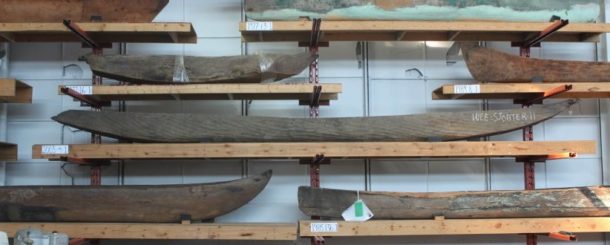
Couchiching Freighter (1985.113.1)
Couchiching Freighter 1 was one of two freight canoes used for a variety of tasks at Camp Kandalore near Algonquin Park: to transport heavy loads across Lake Kabakwa; as a ferry to Chapel Island; as a diving raft; a judge’s stand; barbecue deck and floating variety stage. Both freighters played a huge part in the summer camaraderie in their role as war canoes at the camp. The canoe was built by the Peterborough Canoe Company.
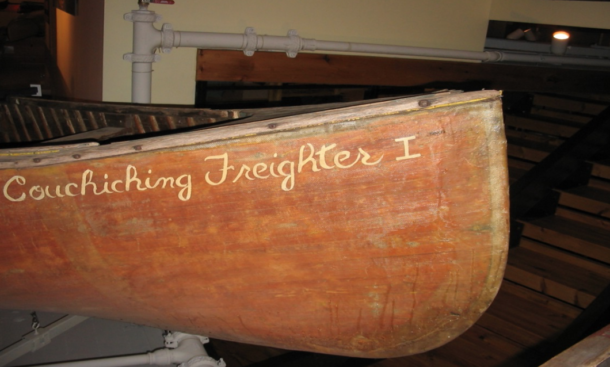
Vagabond (2006.6.1)
Built circa 1918-1923, this canoe was donated to the museum by Farley Mowat in 2006. The canoe was originally acquired by the donor’s father Angus Mowat in the early 1930s in Saskatoon. Soon after, Angus Mowat restored the canoe and assembled a sailing rig. The canoe was called Vagabond by the donor’s father, but Farley Mowat called it Conception. The canoe was used by Farley Mowat throughout his life and is referenced in his poem The Dark Night of Consecon.
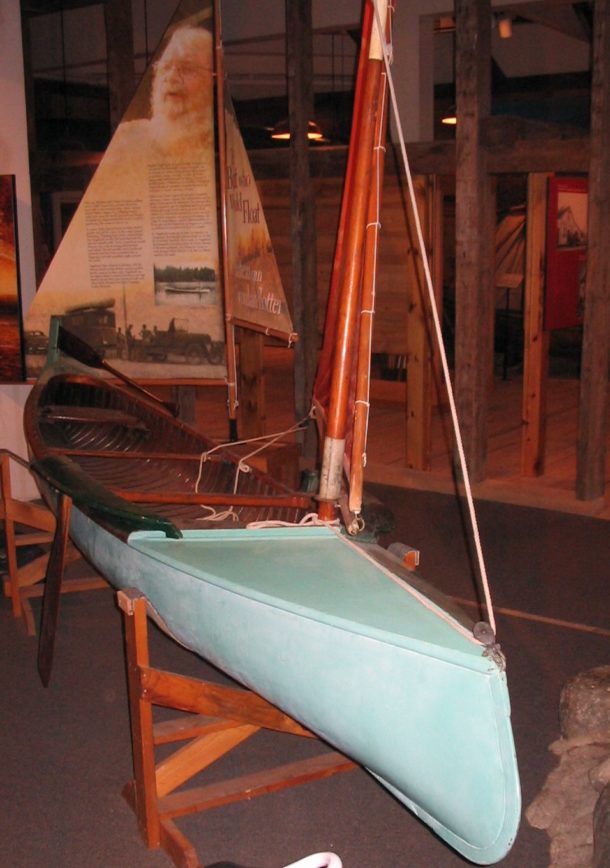
On loan from the estate of Pierre Elliott Trudeau – Ça Ira
Former Prime Minister Pierre Trudeau made good use of this canoe at the cottage, and also paddled it from Montreal to James Bay. Prime Minister Justin Trudeau referenced the canoe in a May 2012 (updated in June 2017) issue of Cottage Life magazine: “My dad named it Ça Ira. This means, in this case, ‘It’ll get there’.”
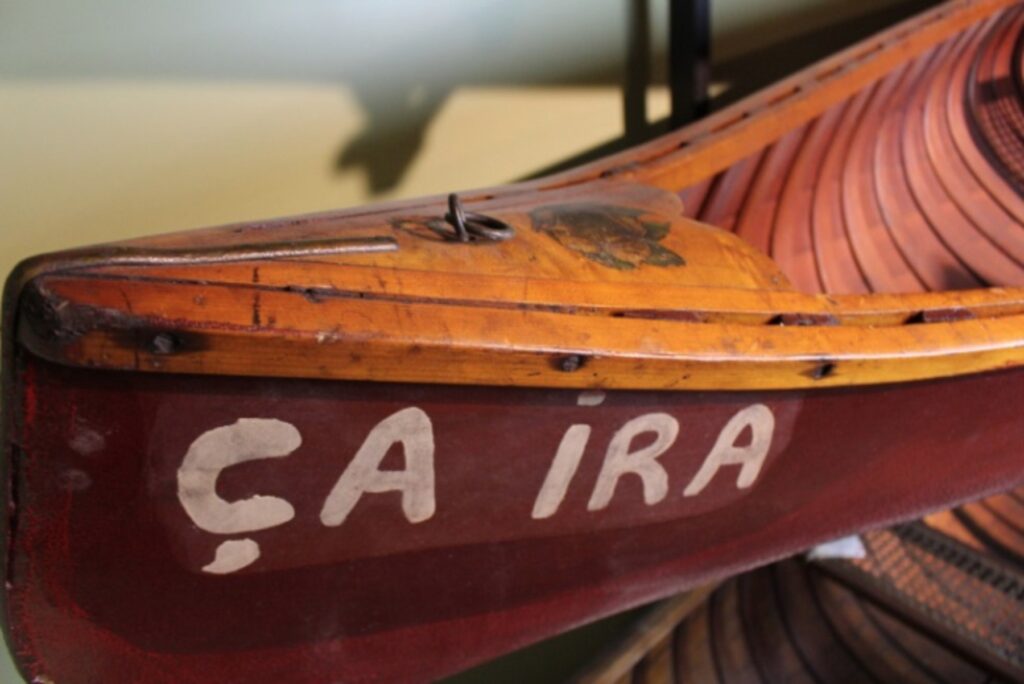
Honourable Mentions
Phillippé (1977.400.1)
Wood Canvas, Minto Canoe
Blue is your colour, Phillippé.
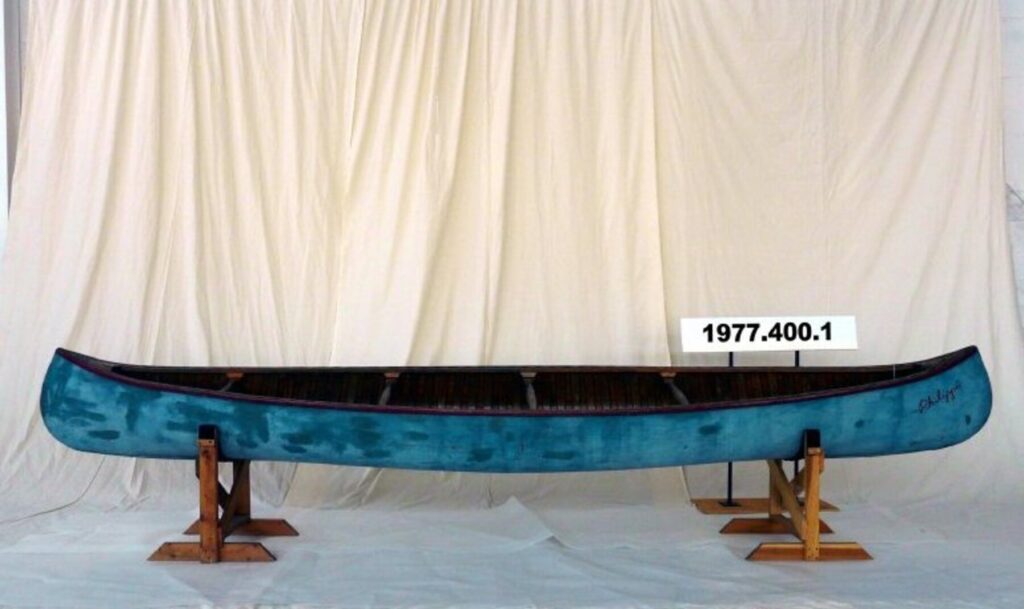
Cherie (1977.162.1)
Wood Canvas Canoe
Builder: W.T. Bush
My Cherie amour, lovely as a summer day.
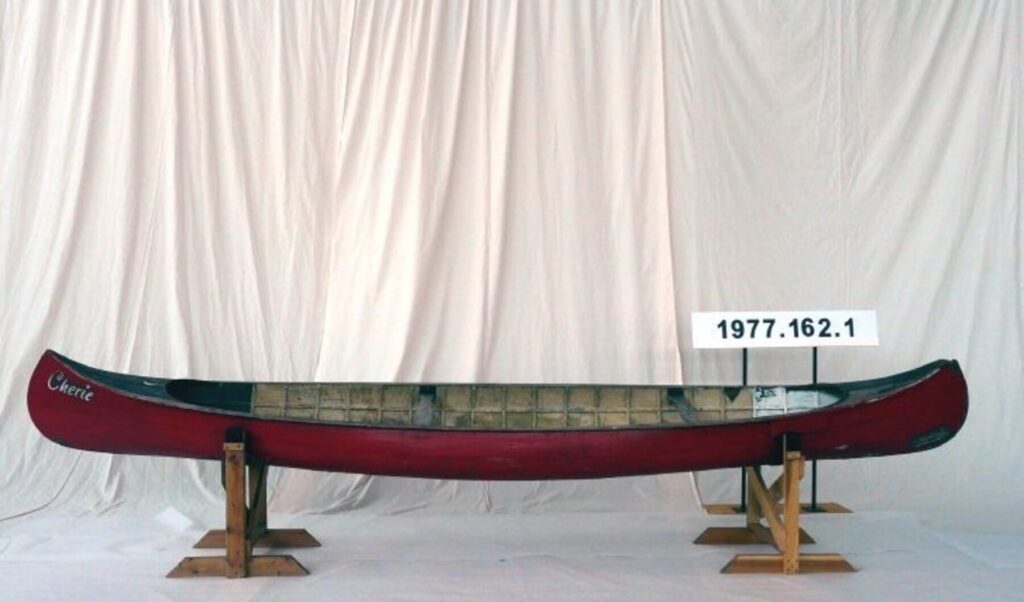
Diva (I 411)
Longitudinal Strip Canoe
Builder: Peterborough Canoe Company
What dramatic events occurred to give this modest canoe a name like Diva?!
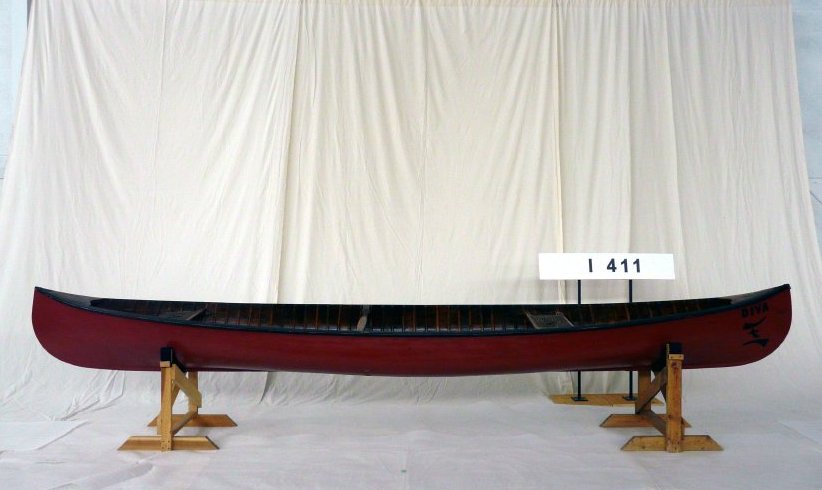
Overwego (1985.122.1)
Longitudinal Strip Canoe
Builder: William English Canoe Company
One can imagine what inspired this name choice…
